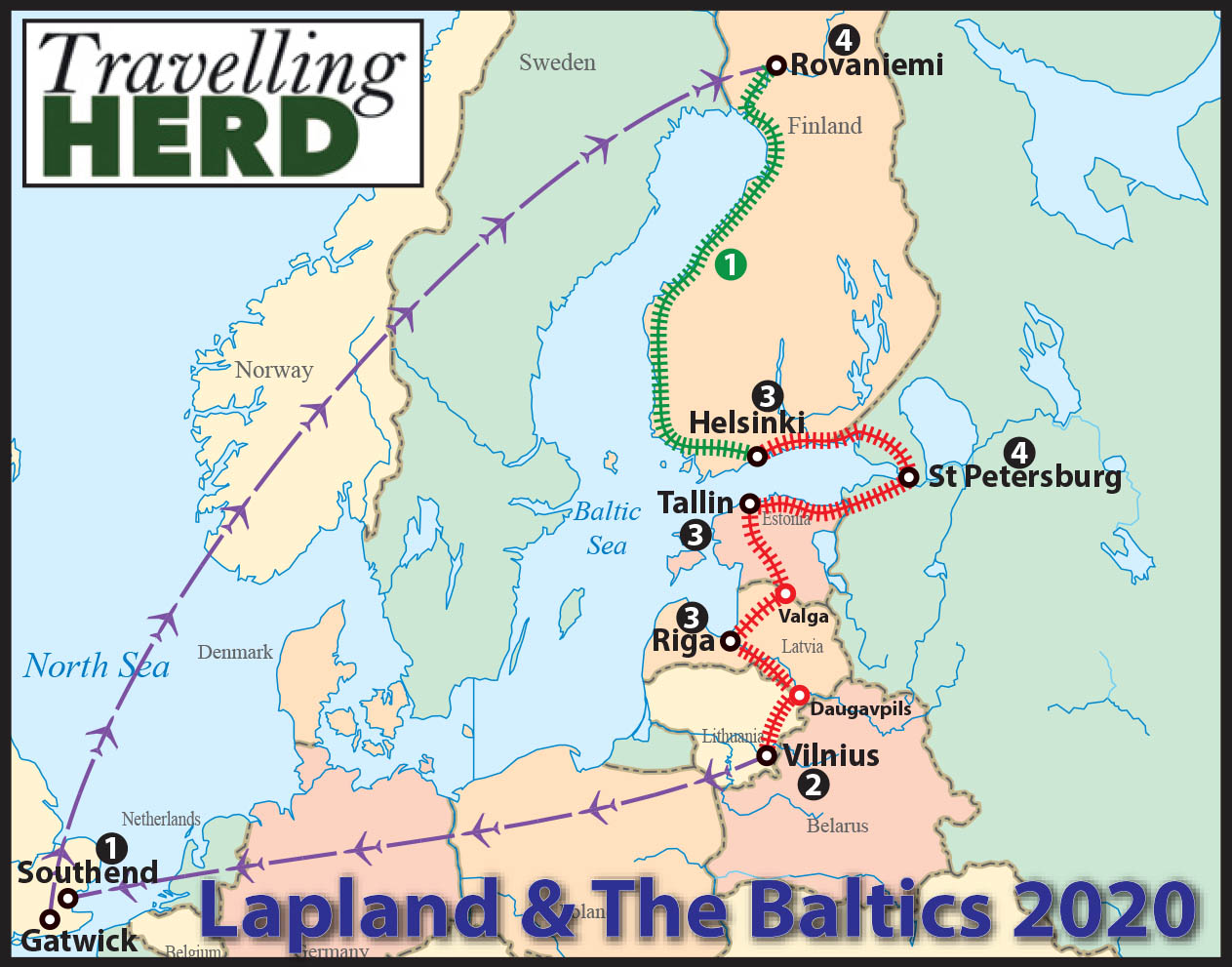Tuesday 21st January 2020
Although we had a flight to catch we wanted to pay a visit to see some of the places which had been closed the day before. We therefore walked to Halės Turgus, the oldest market in Vilnius. The exterior of the building is picturesque but the stalls were not as universally interesting as some of the markets we have visited recently. It seemed to be in the process of redevelopment as a tourist attraction, with interesting displays of local foodstuffs rubbing shoulders with people who looked as though they were selling homemade jams, woollens and second hand goods off makeshift tables. Curiously, although both Lithuania and Latvia have flourishing wool and knitting stores, we did not see any sheep in the fields during our train and coach journeys. Perhaps they are kept indoors at this time of year as the weather is expected to be much colder.
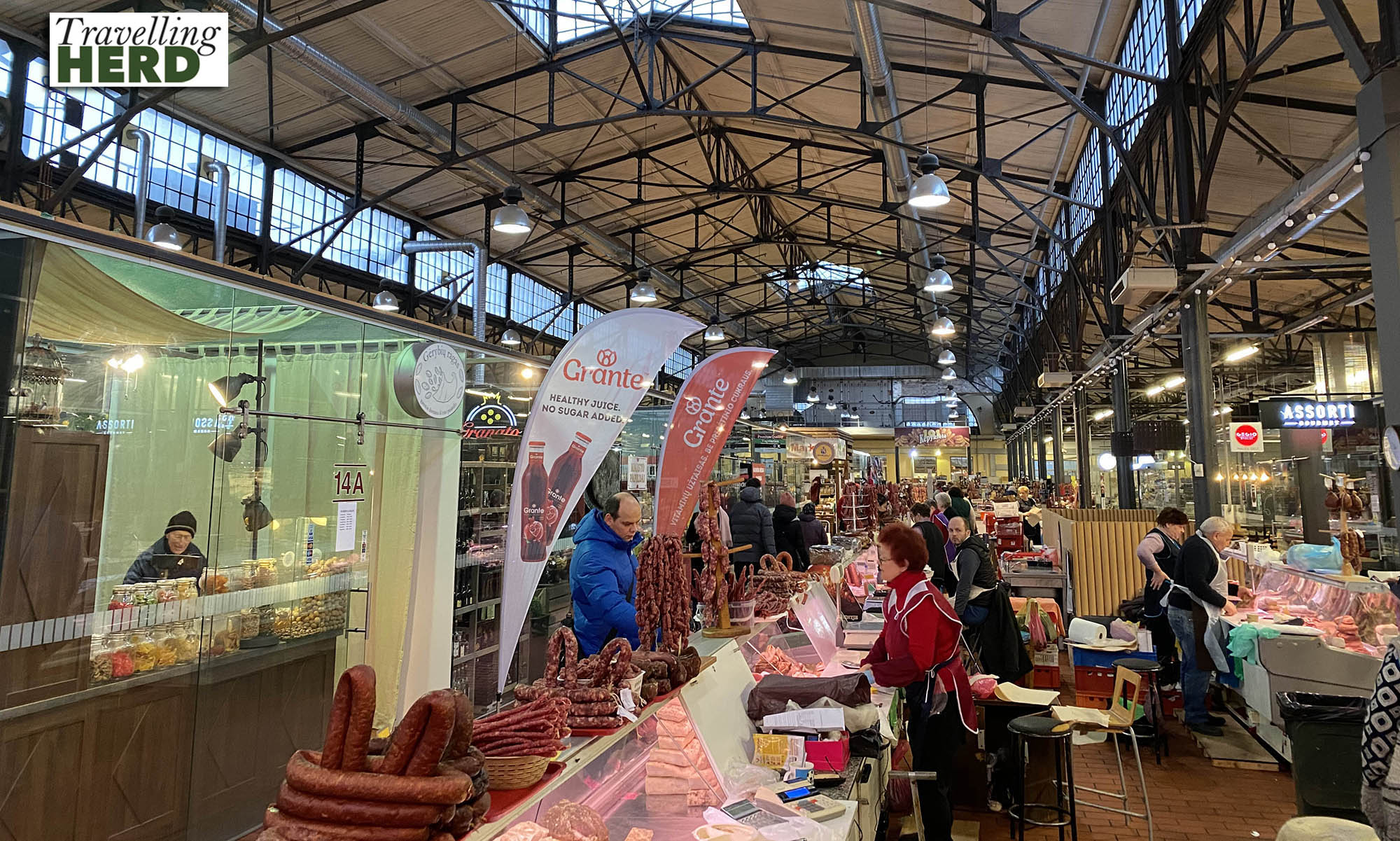
From here we went to the Palace of the Grand Dukes of Lithuania which offers visitors several different colour-coded tour routes: History, Archaeology, Architecture; Reconstructed Historical Interiors; Weaponry, Everyday Life and Music as well as an exhibition centre.
The Palace was originally built within the lower castle of Vilnius during the 15th century for the rulers of the Grand Duchy of Lithuania who would also become the future Kings of Poland.
The History, Archaeology and Architecture Tour takes you down to the ruined foundations of the old castle.

The Palace was extended and evolved over the years prospering as the political and cultural centre of the Polish-Lithuanian Commonwealth. The displays give an incredibly detailed history of these rulers who were sometimes at war with their cousins over the succession and sometimes visiting them for Christmas.
After the fall of this Commonwealth, the Palace fell into disrepair and the Grand Duchy of Lithuania was incorporated into the Russian Empire. The remaining sections of the Palace were demolished in 1801 on the orders of Russian officials and the materials were sold.
Following Lithuanian Independence in May 1989 the Lithuania Government considered the various options for this historic site. Eventually, in 2000, the Government passed legislation to allow the reconstruction of the palace. Work started in 2002 on the site of the original building and it took 16 years to complete.
After History, Archaeology and Architecture we went on the Tour of the Reconstructed Historical Interiors which includes the Gothic Antechamber with star vaulting. The shape of the ceiling and the coloured tiles were based on remnants found in the basement below the room during archeological excavations.
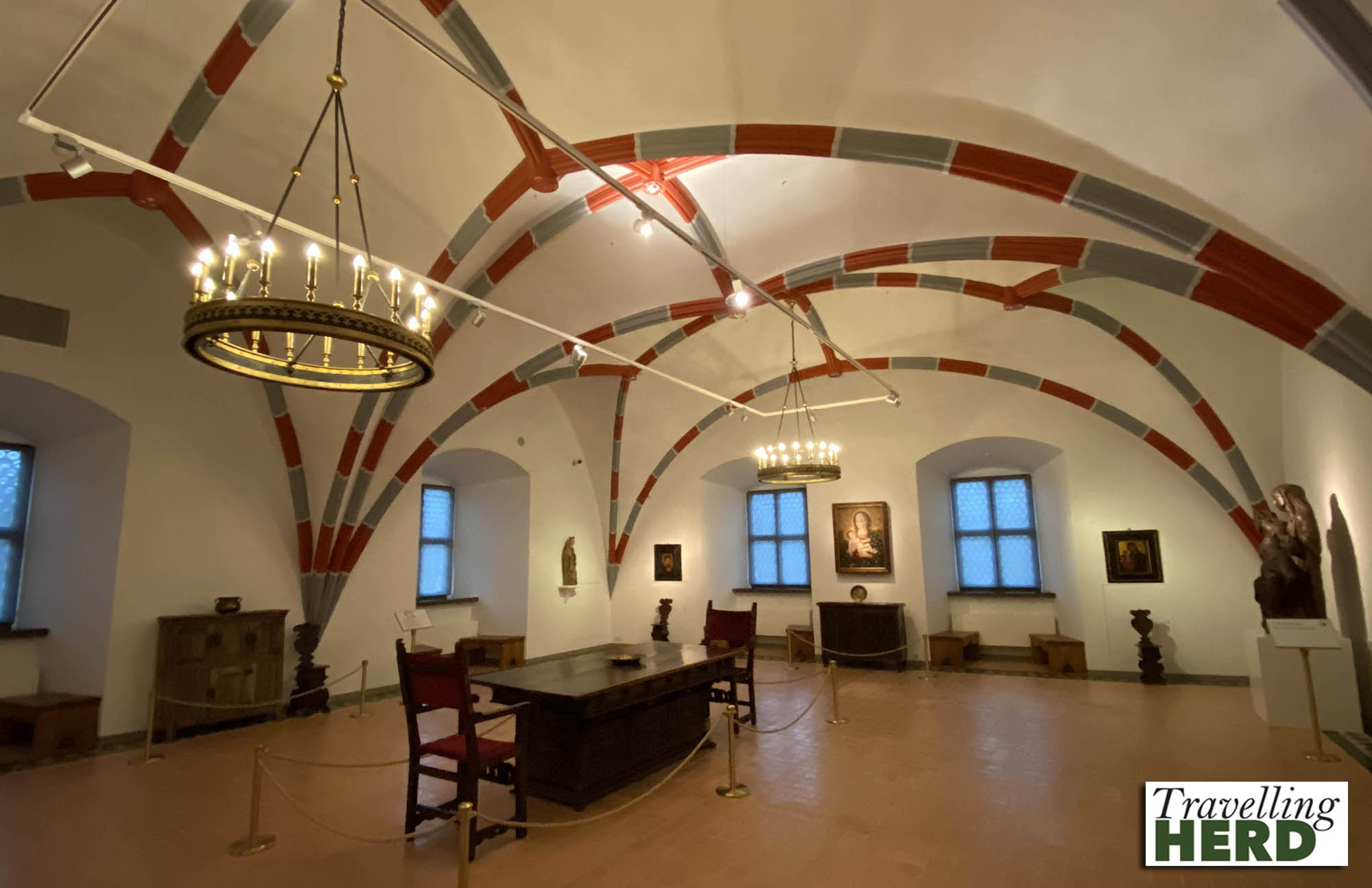
The Lower Ceremonial Hall is a Renaissance audience hall and has been recreated with a beautiful, ornate coffered ceiling and frieze.
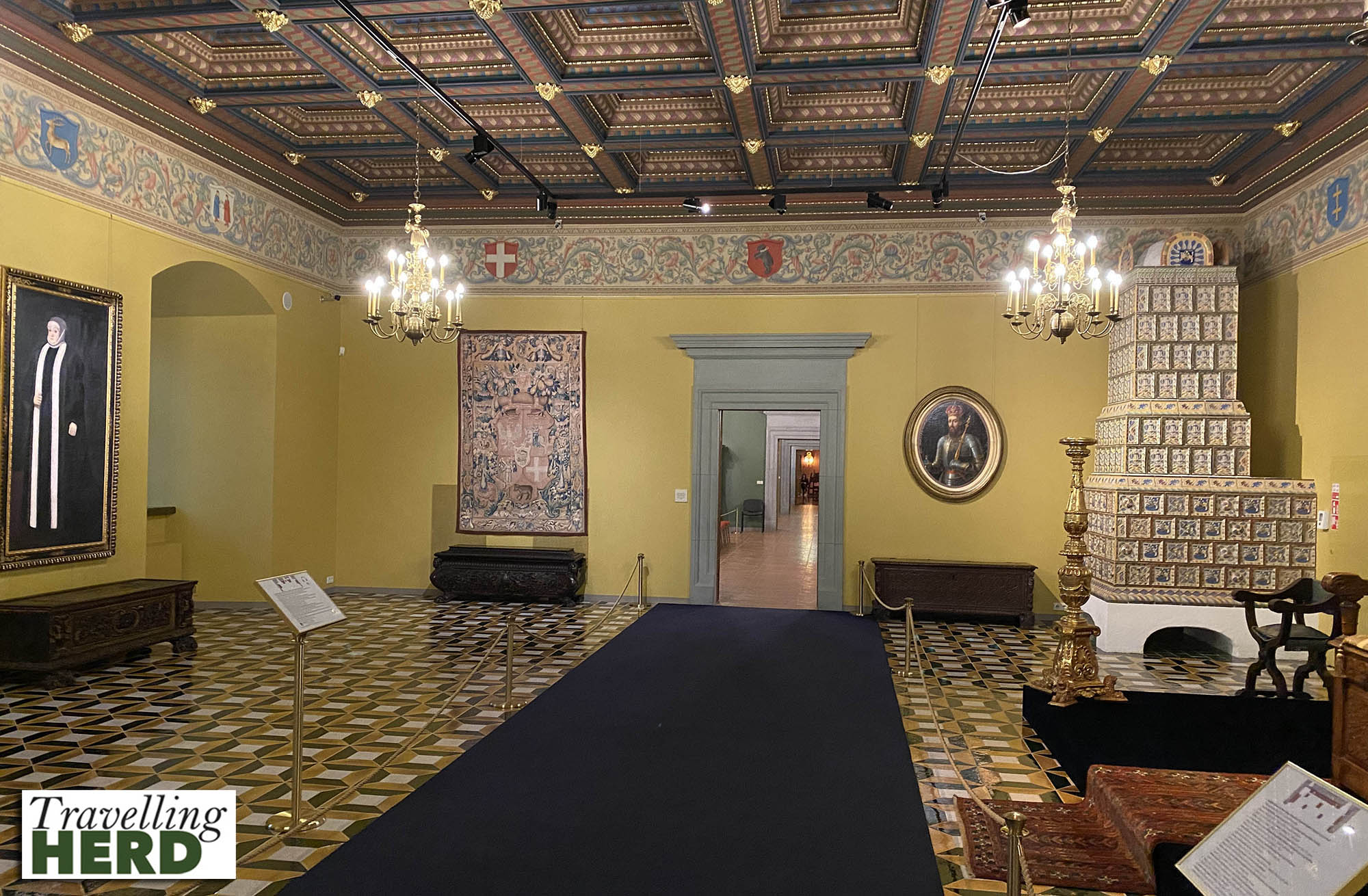
There is an observation tower which, thankfully, was enclosed and you have views across to the old castle.
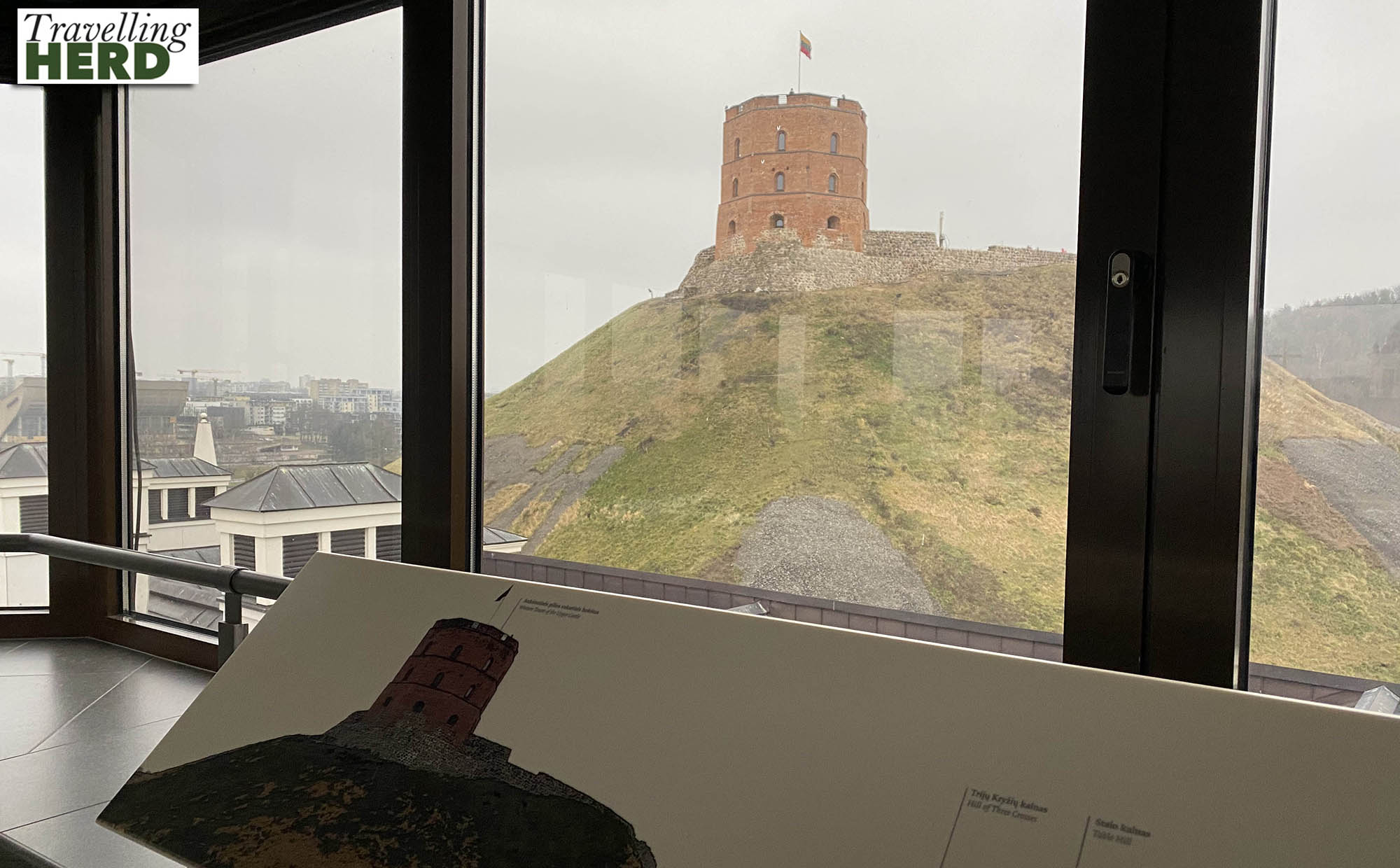
The tour continues via the throne room . . .
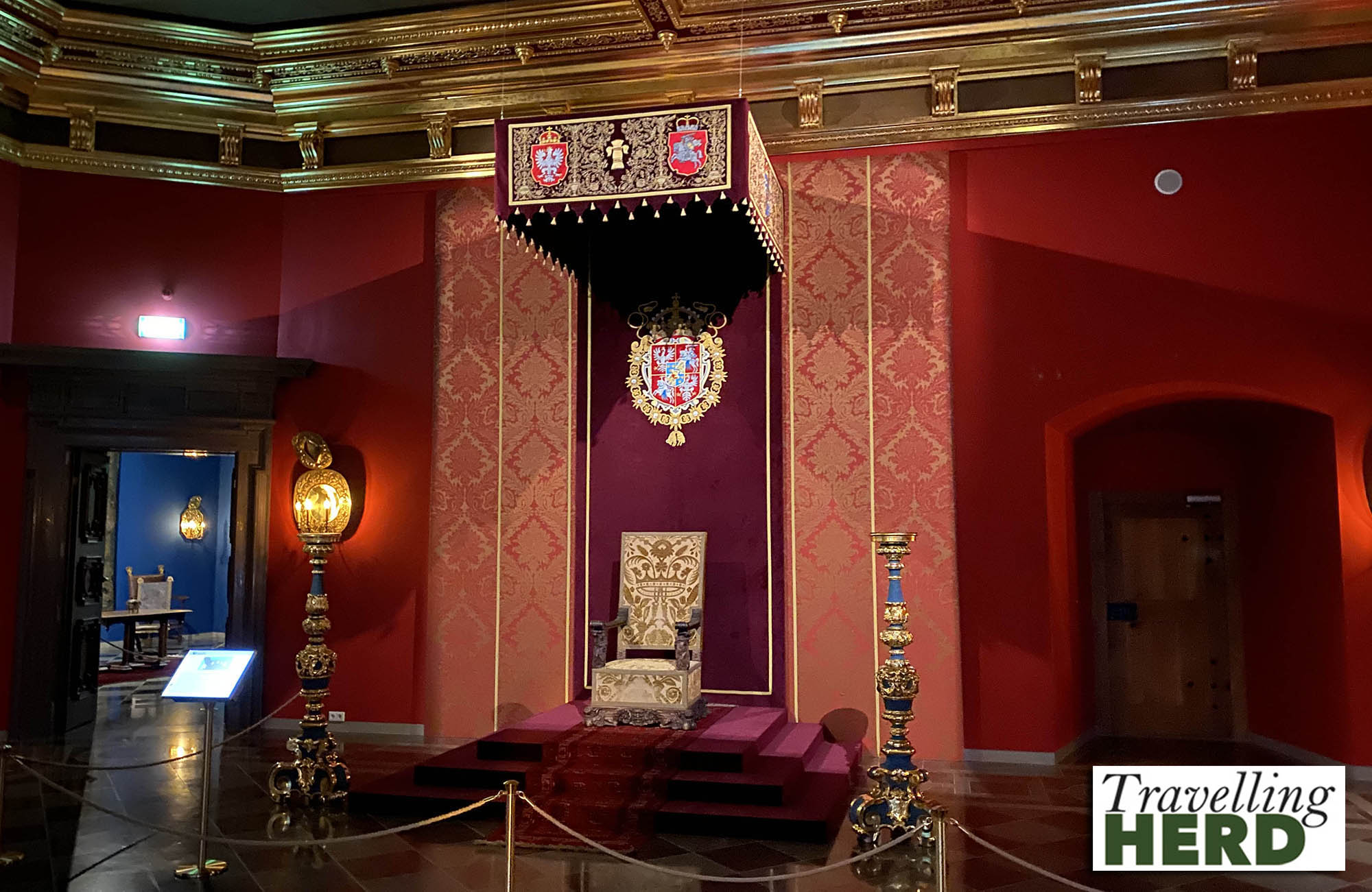
. . . and the courtyard. Having followed just two of the three tour routes we had to leave to return to the hotel, collect our luggage and catch a flight. This is a grand project to celebrate Lithuania’s rightful place in history and we did not feel that we had time to do it justice.
The courtyard in particular reminded Robert of another residence for Polish royalty, Wawel Castle in Kraków.
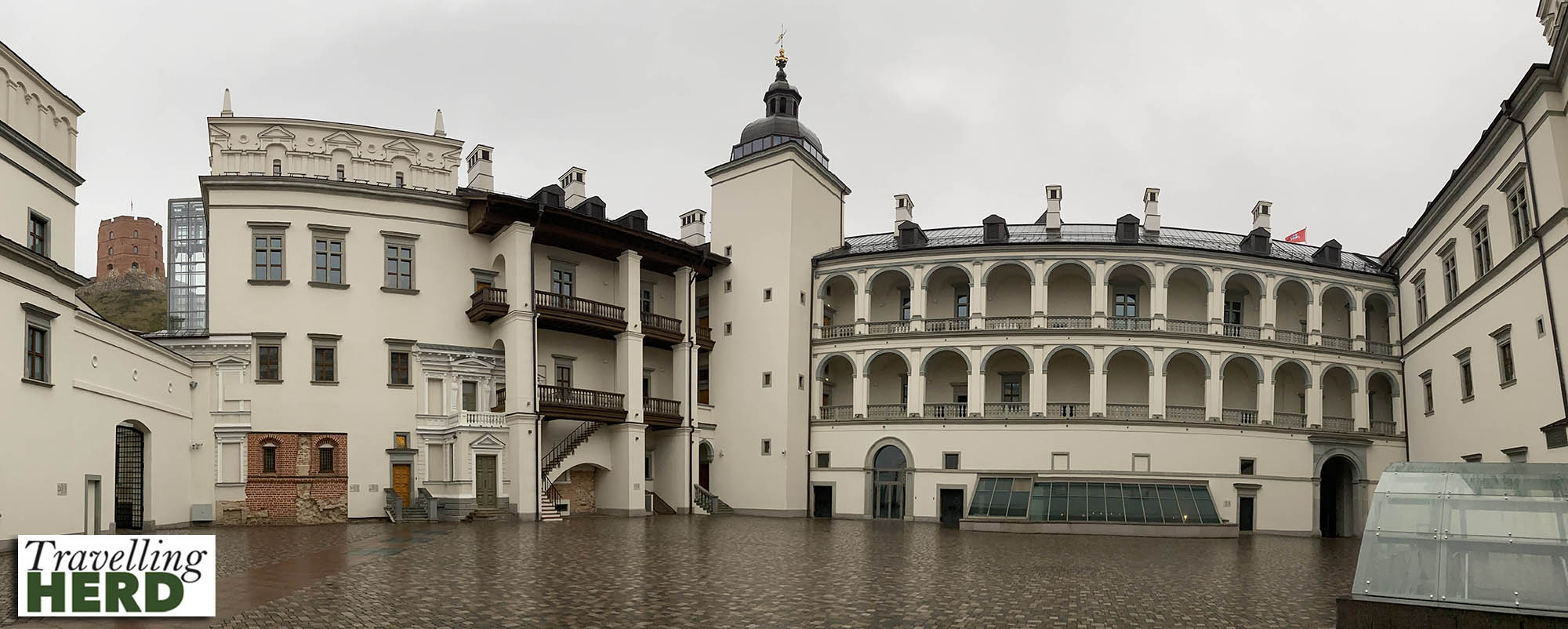
When we arrived at the airport we found that a previous flight to Southend, due to leave four hours before ours was still delayed. We had visions of a very lengthy wait compounding the two hour time difference until we found that the delayed flight was from another airline and our flight was, thankfully, on time.
Later, as we were settling in to a late supper at the airport hotel with views over the runway we watched as the delayed flight taxied towards the terminal. The morning promised an early trip to the gym, breakfast and a leisurely journey home.
Route Map:
